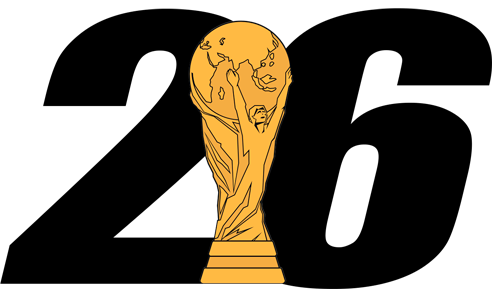The 2026 FIFA World Cup is fast approaching, and fans all around the world are eager to see which nations will qualify for this prestigious tournament.
With the expansion to 48 teams, this World Cup promises to be one of the most exciting and diverse in history. In this article, we’ll take a closer look at which teams are likely to qualify, the FIFA rankings, and the group allocations for the different confederations.
FIFA Rankings: The Road to Qualification
The FIFA rankings play a significant role in determining which teams qualify for the World Cup. These rankings are updated regularly and are used to seed teams into various pots during the draw for the group stage.
Historically strong teams like Brazil, Germany, Argentina, and France often find themselves at the top of these rankings.
The qualification process for each confederation varies, but it typically involves a series of matches, including qualifiers and playoffs.
Teams accumulate points based on their performance, which directly affects their FIFA ranking. The higher a team’s ranking, the more likely they are to secure a spot in the World Cup.
UEFA (Europe): Powerhouses and Competitive Battles
UEFA, the European confederation, is known for its highly competitive qualifying process. The continent is allocated a significant number of spots in the World Cup, making it one of the toughest regions to secure qualification.
Top-ranked European teams like France, Belgium, and England are expected to comfortably qualify for the 2026 World Cup.
However, the battle for spots is fierce, with strong teams like Italy, Spain, and Portugal fighting to secure their places. Underdog stories, like that of Iceland in the 2018 World Cup, also add excitement to the mix.
CONMEBOL (South America): Intense Rivalries
CONMEBOL features some of the most passionate footballing nations in the world. Teams like Brazil, Argentina, and Uruguay are consistently strong performers. The top four or five teams in the region typically secure automatic berths, while others may have to go through playoffs.
Fans can expect fierce rivalries and closely contested matches as South American teams battle for their spots. Iconic matchups like Brazil vs. Argentina are guaranteed to be a highlight of the qualification process.
CONCACAF (North and Central America and the Caribbean): Emerging Powers
CONCACAF has seen the emergence of teams like the United States, Mexico, and Costa Rica as strong footballing nations. These teams, along with others from the region, will vie for World Cup qualification.
With the expansion of World Cup slots, CONCACAF will have more opportunities to showcase its talent on the global stage. Teams like Canada, Jamaica, and Honduras will aim to make their mark in 2026.
CAF (Africa): Competitive and Unpredictable
Africa’s qualification process is known for its unpredictability. While traditional footballing powerhouses like Nigeria, Senegal, and Egypt are strong contenders, the African qualifiers often produce surprises.
The diversity of playing styles and the challenging conditions make African qualifiers a spectacle to watch. Nations from across the continent will compete for a place in the World Cup, making the qualification process highly competitive.
OFC (Oceania) and AFC (Asia): Expanding Opportunities
Oceania’s OFC and Asia’s AFC are allocated fewer World Cup spots compared to other confederations. However, these regions have shown remarkable growth in recent years.
Teams from Australia, New Zealand, Japan, South Korea, and Iran are expected to compete fiercely in the AFC qualifiers. In the OFC, New Zealand is the dominant force.
Group Stage Allocations: A Global Showdown
Once the qualification process is complete, the draw for the group stage will take place. The allocation of teams into groups will be based on FIFA rankings and a desire to create diverse and exciting matchups.
The 2026 FIFA World Cup promises to be a global showdown of footballing talent. With teams from every corner of the world vying for glory, fans can expect unforgettable moments, dramatic upsets, and thrilling matches. As we approach the tournament, anticipation is building, and football enthusiasts eagerly await the final list of qualified nations.
In the end, only time will tell which teams will make it to the grand stage of the 2026 FIFA World Cup, but one thing is for sure: the world will be watching, and the tournament is bound to deliver moments that will be etched in footballing history.
